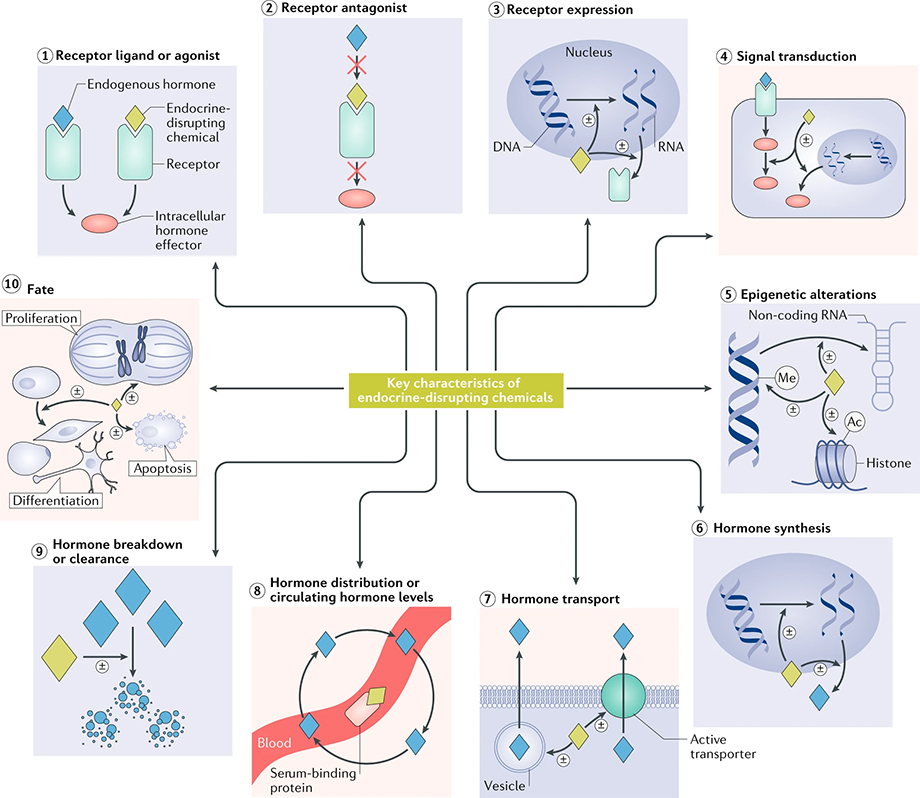A new system for evaluating the potential health risks of endocrine-disrupting chemicals (EDCs) has been proposed by an international team of leading experts.
EDCs are chemicals that interfere with our hormones and can cause health risks such as cancer, reproductive problems, cognitive difficulties and obesity.
Whilst all humans have been exposed to potentially dangerous EDCs, there is currently no widely accepted, systematic method for identifying those that are hazardous, leading to confusion among regulatory bodies.
Now, an international team of EDC researchers has proposed a new system which uses 10 key characteristics to point towards whether a disruptor can be hazardous to humans.
Its hoped that using the new system will aid scientists in hazard identification, allow them to better group hazardous EDCs and provide a foundation for more accurate risk assessment.
The proposal – Consensus on the key characteristics of endocrine-disrupting chemicals as a basis for hazard identification – was published in Nature Reviews Endocrinology.
“The key characteristics for endocrine disruptors will help specialists engaged in protecting us from risks from these chemicals,” said Professor Andreas Kortenkamp, one of 16 scientists behind the proposal and Theme Leader for the Environment and Health Theme, part of the Institute of Environment, Health and Societies at Brunel University London.
“The characteristics will provide a useful platform for identifying these chemicals in the future."

The key characteristics of endocrine-disrupting chemicals - Image ©Nature Reviews Endocrinology
For further information on the Institute of Environment, Health and Societies at Brunel University London, please visit brunel.ac.uk/research/Institutes/Institute-of-Environment-Health-and-Societies
Reported by:
Tim Pilgrim,
Media Relations
+44 (0)1895 268965
tim.pilgrim@brunel.ac.uk